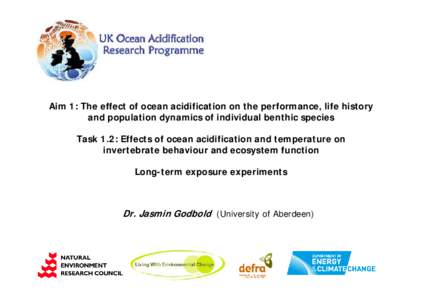 Date: 2013-11-15 10:09:26Mesocosm heat transfer light temperature Ocean acidification Carbon dioxide Physiology Organism Chemistry Chemical oceanography Geochemistry | |  Aim 1: The effect of ocean acidification on the performance, life history and population dynamics of individual benthic species Task 1.2: Effects of ocean acidification and temperature on invertebrate behaviour and ecosy Aim 1: The effect of ocean acidification on the performance, life history and population dynamics of individual benthic species Task 1.2: Effects of ocean acidification and temperature on invertebrate behaviour and ecosy
Add to Reading ListSource URL: www.oceanacidification.org.ukDownload Document from Source Website File Size: 541,56 KBShare Document on Facebook
|

